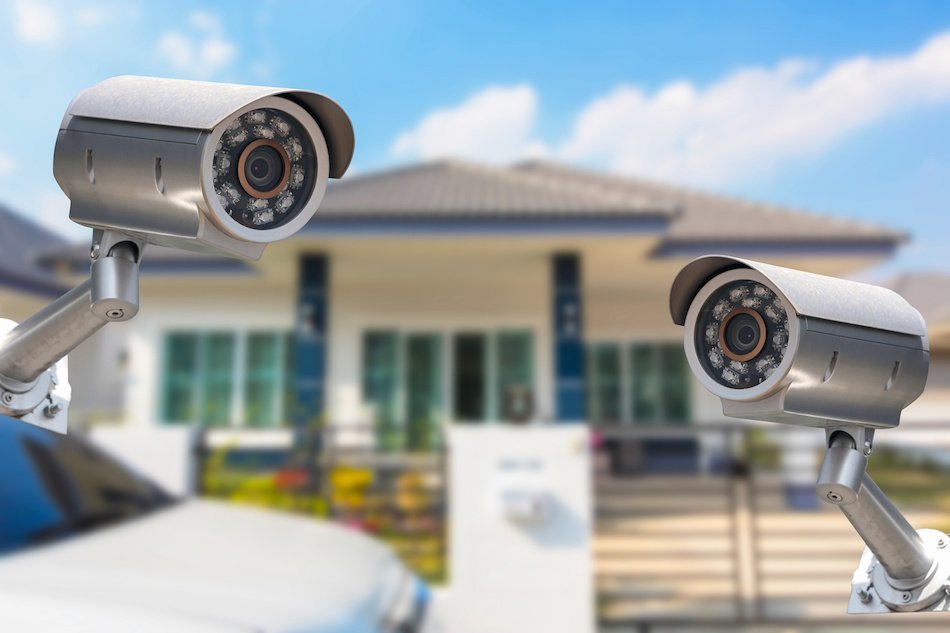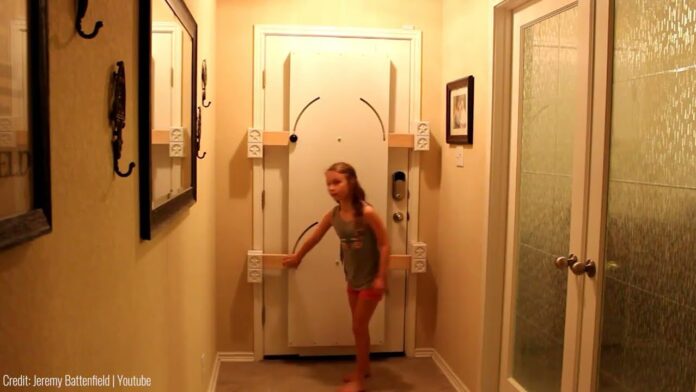The sanctity of our homes is a precious thing, a place where we seek refuge, comfort, and a sense of belonging. Yet, in today’s world, threats to our safety and security are growing more prevalent. From property theft to personal attacks, safeguarding our homes and families has become a paramount concern. Thankfully, technology has advanced, offering us a plethora of tools to enhance our sense of security. Residential security systems are now more accessible, affordable, and sophisticated than ever before, providing a comprehensive approach to protecting what matters most. This comprehensive guide delves deep into the world of residential security systems, exploring their different components, functionalities, and the various options available to meet individual needs. We will unravel the complexities of choosing the right system, navigating installation processes, and understanding the ongoing maintenance requirements. By the end, you will be empowered to make informed decisions about your home security, ensuring a safer and more secure environment for yourself and your loved ones.
Understanding the Need for Residential Security
In a world increasingly plagued by crime and uncertainty, the need for robust home security has never been greater. Statistics paint a stark picture: The FBI reports over 7.5 million property crimes annually in the United States. Home burglaries alone account for nearly 2 million incidents each year. These numbers only continue to rise, making it crucial for homeowners to take proactive measures to protect their properties and families.
Residential security systems offer a comprehensive solution to this growing problem. These systems not only act as a deterrent to potential intruders but also provide homeowners with peace of mind and a sense of control over their surroundings. With advancements in technology, residential security systems have become more efficient, user-friendly, and customizable, catering to the specific needs of each household. Let’s explore the top trends in residential security systems and how they can help protect your home.
Advanced Smart Home Integration

One of the most significant advancements in residential security systems is their integration with smart home technology. With the rise of the Internet of Things (IoT) and home automation, security systems can now be seamlessly integrated into a home’s existing smart devices. This means that homeowners can control their security system, along with other features such as lighting, temperature, and entertainment systems, all from a single platform.
Smart home integration not only provides convenience but also adds an extra layer of security. For example, homeowners can set their security system to automatically arm when they leave their house or turn on lights when motion is detected. They can also receive real-time updates and alerts through their smart devices, providing them with complete control over their home security, even when they are away.
Benefits:
- Improved convenience and control over home security
- Seamless integration with other smart home devices
- Real-time updates and alerts through smart devices
- Customizable settings for specific needs and preferences
Drawbacks:
- Higher initial costs for installation and setup
- May require additional training to utilize all features effectively
- Dependent on reliable internet connectivity for optimal functioning
Cutting-Edge Surveillance Cameras

Surveillance cameras have long been a staple in residential security systems, but recent advancements in technology have taken their capabilities to new heights. With high-definition cameras, night vision, and remote access capabilities, surveillance cameras provide homeowners with a 24/7 view of their property. Additionally, some models offer features such as facial recognition, object detection, and zoom capabilities, making it easier to identify potential threats and track suspicious activity.
The use of wireless cameras has also become more prevalent, eliminating the need for complicated wiring and allowing for more flexible placement options. Some cameras also come equipped with two-way audio, allowing for communication between homeowners and visitors or intruders. With multiple camera options available, homeowners can create a custom surveillance system that fits their specific needs and budget.
Benefits:
- Continuous monitoring of property with high-definition cameras
- Advanced features such as facial recognition and object detection
- Wireless options for easy installation and placement
- Two-way audio for communication with visitors or intruders
Drawbacks:
- Higher costs for advanced camera features
- Limited range for wireless cameras, requiring additional equipment for larger properties
- Dependent on stable internet connection for optimal performance
Enhanced Access Control Systems
Gone are the days of traditional lock and key systems. With enhanced access control systems, homeowners can now have complete control over who enters their property and when. These systems use technologies such as keyless entry, access cards, biometric scans, and mobile apps to grant access to authorized individuals. They can also be integrated with surveillance cameras and alarms to provide a comprehensive security solution.
One of the significant advantages of enhanced access control is the ability to track and monitor entry points in real-time. This means that homeowners can receive notifications whenever someone enters or leaves their property, providing them with greater visibility and control over their home’s security. Additionally, these systems can be customized to restrict access to certain areas within a property, making it ideal for families with children or households with live-in staff.
Benefits:
- Complete control over who enters and exits the property
- Real-time tracking and monitoring of entry points
- Customizable access restrictions for specific areas
- Integration with surveillance cameras and alarms for a comprehensive security solution
Drawbacks:
- Higher initial costs for installation and setup
- May require additional training for effective use
- Dependence on stable internet connectivity for remote access capabilities
Comprehensive Alarm Systems
Alarm systems have been a mainstay in residential security for decades, but modern technology has made them more advanced and efficient than ever before. Today’s alarm systems offer not only a loud audible alert but also send notifications to homeowners’ smart devices, allowing for immediate action in case of an emergency. They also come equipped with sensors that can detect movement, vibrations, and even changes in temperature, ensuring comprehensive coverage for all possible threats.
With the integration of artificial intelligence (AI), alarm systems can also learn and adapt to a household’s patterns and behaviors, reducing the risk of false alarms. Some models also offer backup power options, ensuring continuous protection even in the event of a power outage. With customizable settings and monitoring options, homeowners can create a personalized alarm system that suits their specific needs and provides them with peace of mind.
Benefits:
- Immediate notification of potential threats
- Advanced sensors for comprehensive coverage
- AI technology for reduced false alarms
- Backup power options for continuous protection
Drawbacks:
- High initial costs for installation and setup
- May require additional equipment for larger properties
- Additional training for effective use of all features
24/7 Monitoring Services
For added security and peace of mind, many residential security systems now offer 24/7 monitoring services. These services provide round-the-clock surveillance of a property, with trained professionals monitoring for any suspicious activity or alarms. In case of a break-in or other emergency, these professionals can immediately dispatch authorities to the property, providing homeowners with a rapid response to potential threats.
Additionally, some monitoring services also offer remote access to surveillance cameras, allowing homeowners to view their property in real-time from anywhere in the world. This feature is especially beneficial for individuals who travel frequently or have multiple properties to monitor. While monitoring services may come at an additional cost, they offer an extra layer of protection and a sense of security for homeowners.
Benefits:
- Round-the-clock surveillance by trained professionals
- Immediate response to emergencies or alarms
- Remote access to surveillance cameras for added convenience
- Provides a sense of security for homeowners, especially those who travel frequently
Drawbacks:
- Additional cost for monitoring services
- Dependent on stable internet connectivity for remote access
- May require additional equipment for larger properties
User-Friendly Mobile Apps
In today’s digital world, mobile apps have become an essential part of our daily lives. The same can be said for residential security systems. With user-friendly mobile apps, homeowners can now control and monitor their security system from anywhere, at any time. These apps offer features such as arming and disarming the system, receiving real-time notifications, and viewing surveillance footage remotely.
Mobile apps also allow for easy integration with other smart home devices, making it convenient for homeowners to manage all aspects of their home security in one place. These apps are continuously updated and improved, providing users with new features and functionalities to enhance their experience. They also come equipped with security protocols to ensure secure access and protection against hacking attempts.
Benefits:
- Convenient and easy control of security system from anywhere
- Real-time updates and notifications on smart devices
- Integration with other smart home devices for added convenience
- Regular updates and security protocols for secure access
Drawbacks:
- Dependence on reliable internet connectivity for optimal performance
- May require additional training for effective utilization of all features
- Potential risk of cyber threats if not secured properly
Conclusion
The safety and security of our homes and families should always be a top priority. With the advancements in technology, residential security systems provide us with a comprehensive solution to protect what matters most. From advanced smart home integration to cutting-edge surveillance cameras and enhanced access control systems, there are multiple options available to fit individual needs and preferences. It is crucial to carefully consider all factors, including upfront costs, ongoing maintenance, and personal requirements, when choosing a residential security system. By understanding the various components and functionalities of these systems, homeowners can make informed decisions to ensure the safety and security of their homes and loved ones.
